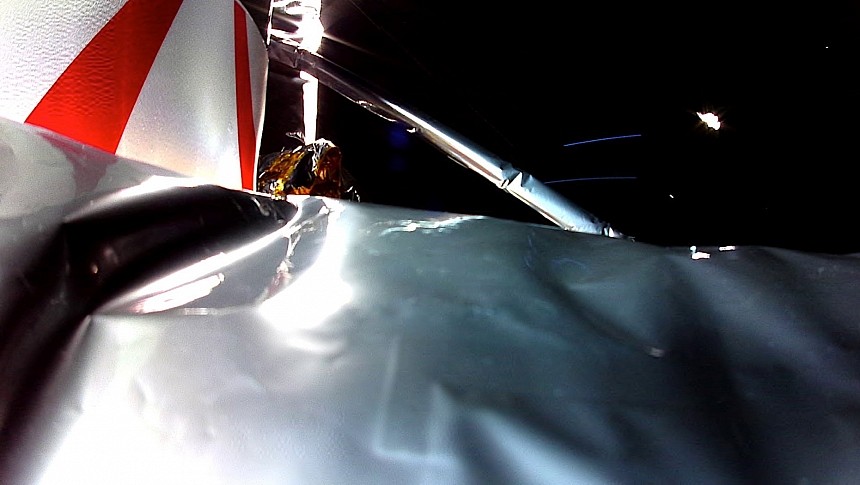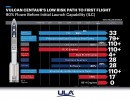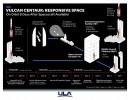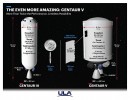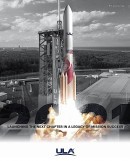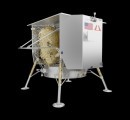On Monday, January 8, we were all thrilled to see the Peregrine Mission One lift off from the Launch Complex 41 at Cape Canaveral Space Force Station in Florida. A collaborative effort between NASA, Astrobotic, and United Launch Alliance (ULA), the mission was supposed to put the first American lander on the Moon in more than five decades. And “was” is the keyword here.
The mission launched on top of a ULA Vulcan Centaur rocket, which performed flawlessly. The rocket delivered its payload to where it needed to be, and the spacecraft carrying a lander called Peregrine to the Moon began getting ready for a journey that would have lasted a bit more than a month (landing on the Moon was scheduled for February 23).
The first thing the spacecraft was supposed to do up there was position itself to face the Sun. This move would have allowed it to use the Sun's light to charge its batteries for the upcoming trip using the onboard solar panels. To perform the maneuver, some engine burns were required.
But the controllers on Earth were unable to perform these burns on account of something that is now described as a… fuel leak. A stupid reason for something to fail, especially in space, but a good enough one to spell doom for the mission.
The fuel leak prevented the spacecraft's thrusters from operating in the desired manner. Instead, controllers are now using them to prevent the Peregrine from entering an uncontrollable tumble and struggling to keep the spacecraft pointed at the Sun.
According to Astrobotic's last update (from six hours before this story was published), the spacecraft should be able to hold its Sun-facing orientation for at most 40 more hours.
Given what happened (the exact cause of the leak is not yet known), a Moon landing has is ruled out at the moment. In a push to save the mission from being a complete bust, Astrobotic plans to get as close to the Moon as possible - who knows, maybe something good will come from this maneuver after all.
There are several important science tools on the Peregrine lander, all of which would have needed to be on the lunar surface to work. The NASA-backed ones include tools to study the presence of water on the lunar surface and the composition of the Moon's very thin atmosphere.
There is even a measuring tool meant to calculate the distance between the orbiting or landing spacecraft and the lander, which later would have become a permanent location marker in the Sinus Viscositatis region of the satellite's near side, where the lander was supposed to touch down.
The status of the Peregrine mission is dynamically changing, and we'll update this story once we learn more about its fate.
The first thing the spacecraft was supposed to do up there was position itself to face the Sun. This move would have allowed it to use the Sun's light to charge its batteries for the upcoming trip using the onboard solar panels. To perform the maneuver, some engine burns were required.
But the controllers on Earth were unable to perform these burns on account of something that is now described as a… fuel leak. A stupid reason for something to fail, especially in space, but a good enough one to spell doom for the mission.
The fuel leak prevented the spacecraft's thrusters from operating in the desired manner. Instead, controllers are now using them to prevent the Peregrine from entering an uncontrollable tumble and struggling to keep the spacecraft pointed at the Sun.
According to Astrobotic's last update (from six hours before this story was published), the spacecraft should be able to hold its Sun-facing orientation for at most 40 more hours.
Given what happened (the exact cause of the leak is not yet known), a Moon landing has is ruled out at the moment. In a push to save the mission from being a complete bust, Astrobotic plans to get as close to the Moon as possible - who knows, maybe something good will come from this maneuver after all.
There are several important science tools on the Peregrine lander, all of which would have needed to be on the lunar surface to work. The NASA-backed ones include tools to study the presence of water on the lunar surface and the composition of the Moon's very thin atmosphere.
There is even a measuring tool meant to calculate the distance between the orbiting or landing spacecraft and the lander, which later would have become a permanent location marker in the Sinus Viscositatis region of the satellite's near side, where the lander was supposed to touch down.
The status of the Peregrine mission is dynamically changing, and we'll update this story once we learn more about its fate.
Update #5 for Peregrine Mission One: pic.twitter.com/94wy2J0GyA
— Astrobotic (@astrobotic) January 8, 2024
